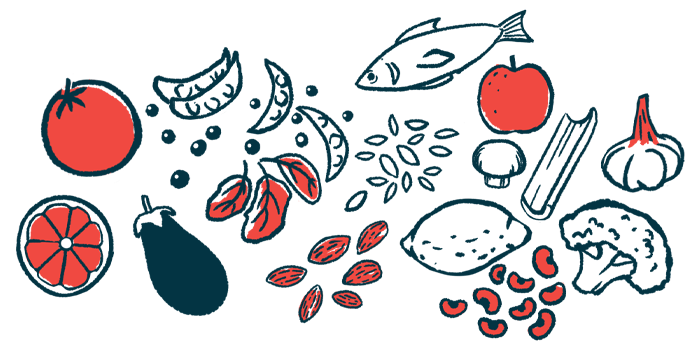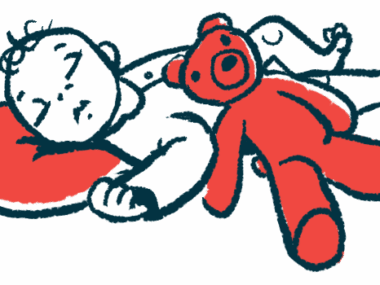Symptoms of nutritional rickets seen to mimic SMA type 3 in boy
Toddler's walking problems due to poor diet, no sun - not SMA - in case
Written by |

In an African American toddler, neuromuscular symptoms of a severe form of nutritional rickets — a condition characterized by weak or soft bones due to dietary deficiencies — were initially mistaken as spinal muscular atrophy (SMA) type 3, according to a new case study.
Researchers say the overlapping symptoms of the two disorders — specifically, a loss of walking ability and a reduction or absence of normal bodily reflexes — resulted in a case of nutritional rickets “masquerading” as SMA type 3 in the 33-month-old boy. Further testing ultimately revealed the child had very low vitamin D levels, which led to the correct diagnosis, despite “an error in the initial neurological evaluation.”
This case, the team noted, is a reminder for doctors to keep a broad perspective and consider various factors when looking to make a diagnosis, so as to avoid so-called anchoring bias. That’s the tendency to rely too strongly on the first piece of information received during a clinical work-up.
“Medical decision-making is often influenced by cognitive biases leading providers to make premature diagnoses,” the researchers wrote.
The report, “Nutritional Rickets Masquerading as Spinal Muscular Atrophy Type III,” was published in Neuromuscular Disorders by researchers at the Children’s Hospital at Montefiore in New York and the Barbara Bush Children’s Hospital in Maine.
Lack of Vitamin D a key factor in nutritional rickets
SMA is a genetic disease that affects the neurons responsible for controlling voluntary movement. It leads to muscle weakness and wasting, particularly in the muscles closest to the center of the body.
Symptoms of SMA type 3, a milder type of the disorder, usually appear after the first 18 months of life. As the disease advances, muscle weakness can make walking challenging.
Rickets, meanwhile, is a bone disease in early childhood that results in bone pain, poor growth, and soft, weak bones that can lead to bone deformities. It’s usually caused by a deficiency in vitamin D, which plays an essential role in maintaining bone health by regulating calcium and phosphorus levels in the body.
Vitamin D forms in the skin upon exposure to sunlight, and also can be obtained from foods such as oily fish and eggs. As such, vitamin D deficiency-related rickets is usually the result of low sunlight exposure and poor diet — and as such is called nutritional rickets. However, it also can be due to genetic defects and health conditions that affect vitamin D absorption.
Nutritional rickets is more common in dark-skinned children as they need more sunlight to produce vitamin D. Additional risk factors for nutritional rickets include “insufficient family income/low socioeconomic status, poor housing conditions, exclusive breastfeeding, and inadequate vitamin D supplementation in pregnancy and in children,” the researchers wrote.
“While skeletal symptoms of rickets are well studied, neuromuscular symptoms are less commonly reported,” the researchers wrote.
However, three previously reported rickets cases experienced “delayed gross motor development and progressive muscle weakness highlighting that skeletal symptoms may not consistently be the presenting manifestation,” they added.
Both SMA and rickets can cause bones to bend or bow, low muscle tone, and hyporeflexia, which refers to weak or absent reflexes in response to a doctor tapping a certain area of the body, such as the knee.
Like SMA, rickets can cause muscle weakness and wasting affecting both sides of the body, which can result in motor delays or a loss of acquired motor skills such as standing and walking.
Symptoms, timeline track for both conditions
In this case, the researchers detailed the diagnosis of an African American boy not yet 3 whose nutritional rickets symptoms were first considered to be due to SMA type 3.
The boy had started walking at 19 months — whereas most children begin to walk around their first birthdays or a few months afterward. He was not growing adequately, and his weight and height were lower than 99% of other children of the same age.
His pediatrician already was addressing the boy’s failure to thrive before the child was referred to a neurologist due to a loss of “the ability to walk, bear weight, jump, and run” over a two-months period, the researchers wrote.
The parents also reported that the child felt pain when his lower extremities were massaged.
A physical examination revealed the boy had low tone in the muscles around the hips and in both the arms and legs. He also showed low muscle tone and wasting, and muscle weakness in the trunk and neck when transitioning from lying down to a sitting position.
Based on these observations, the doctors suspected a neuromuscular disease, most notably SMA type 3. However, genetic testing for SMA came back negative.
Further genetic testing for 131 other neuromuscular diseases revealed a disease-causing mutation in the SCN4A gene, which provides instructions for making part of a channel protein that’s key for muscle function. Mutations in both copies of this gene — one inherited from each parent — are linked to several neuromuscular disorders.
However, the boy carried the mutation in only one copy of the SCN4A gene, suggesting that this was not the cause of his symptoms.
To further search for the potential cause, the boy was referred to a pediatric neuromuscular specialist, who found thickening of the wrists and ankles, bending of the ribs, shrinkage of calf muscles and lower legs, and bowing of leg bones.
When this doctor asked about the boy’s diet, it was found that he ate “about one meal on most days and no dairy products,” the researchers wrote.
“The child had very poor dietary intake and minimal sun exposure,” they added.
Child shows ‘dramatic improvement’ after treatment for nutritional rickets
Blood testing revealed very low vitamin D levels, at 2.6 nanograms per milliliter (ng/mL), whereas normal levels range from 30 to 80 ng/mL. The levels of calcium and phosphorus were at the lower limit of normal.
Levels of the parathyroid hormone, which is needed for vitamin D to form, were at 1,032 picograms (pg) per mL; normal levels fall in the range of 15 to 65 pg/mL. This increase is thought to be a compensatory mechanism for the lack of vitamin D.
All of these findings, together with X-ray scans, supported a diagnosis of nutritional rickets.
In this case, the presence of symptoms mimicking neuromuscular disease made clinical suspicion for SMA … high.
The treatment plan included vitamin D, calcium, and phosphate supplementation, physical therapy to ease neuromuscular symptoms and improve walking skills, and occupational therapy to address potential food aversion issues.
After six months, the child “showed dramatic improvement,” the team wrote, with gains in walking, a regained ability to run, and better reflexes. However, he continued to show low muscle tone in the shoulder.
“In this case, the presence of symptoms mimicking neuromuscular disease made clinical suspicion for SMA … high,” the team wrote.
As such, “it is crucial” to consider nutritional rickets in the diagnostic process of children presenting such symptoms, they added, even though rickets is “uncommon in the United States.”
Other causes of rickets are typically hereditary and do not typically cause neuromuscular symptoms, the team noted.









